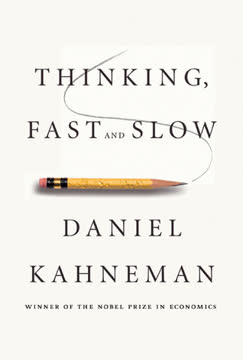가지 주요 요점
지리적 요인이 인류 사회의 불평등한 발전을 형성하다
야리의 질문은 인류 역사의 미스터리 핵심을 찔렀다.
대륙별 축의 차이: 유라시아는 동서 방향 축을 따라 비슷한 위도대에서 작물, 가축, 기술이 확산되기 쉬웠다. 반면, 아메리카와 아프리카는 남북 방향 축을 따라 기후와 생태계가 크게 달라 확산이 어려웠다.
자원 분포: 가축화 가능한 식물과 동물의 풍부함과 분포는 대륙마다 크게 달랐다. 유라시아는 가축화 가능한 종이 풍부했으나, 아메리카와 호주는 훨씬 적었다. 이 차이는 농업 발전 속도와 사회 복잡성에 큰 영향을 미쳤다.
- 유라시아: 대형 가축 13종
- 아메리카: 단 1종(라마/알파카)
- 호주: 없음
식량 생산이 사회 발전의 촉매제가 되다
왜 부와 권력이 지금과 같은 방식으로 분배되었는가?
농업 혁명: 수렵채집 사회에서 식량 생산 사회로의 전환은 인류 역사에서 중대한 전환점이었다. 이 변화는 인구 증가, 노동 분화, 복잡한 사회 구조 발전을 가능하게 했다.
경쟁 우위: 식량 생산을 일찍 도입한 사회는 수렵채집 사회에 비해 다음과 같은 큰 이점을 얻었다.
- 높은 인구 밀도
- 비식량 생산 전문 인력(장인, 군인, 사제 등) 지원 가능
- 신기술 개발
- 부와 자원의 축적
식물과 동물의 가축화가 기술 발전을 이끌다
바퀴의 모든 응용은 기원전 3400년경 수메르 우루크 도시에서 확인된 유라시아에서 채택되었다.
농업 혁신: 식물과 동물의 가축화는 다음과 같은 기술 발전을 가져왔다.
- 쟁기 등 농기구
- 운송용 바퀴 달린 수레
- 동력 기계
전문화된 도구: 사회가 복잡해지면서 다양한 산업과 활동을 지원하는 전문 도구와 기술이 등장했다.
- 금속 가공과 광업
- 섬유 생산
- 건축과 공학
- 전쟁과 무기
문자 체계는 필요와 기회에서 진화하다
문자는 무기, 미생물, 중앙집권 정치 조직과 함께 정복의 현대적 수단으로 발전했다.
문자의 기원: 문자는 여러 지역에서 독립적으로 발전했으며, 점점 복잡해지는 사회의 필요를 충족시키기 위해 만들어졌다. 주요 발전 요인은 다음과 같다.
- 무역과 세금 기록
- 종교 및 의식 목적
- 지식과 역사 보존
문해력 확산: 문자의 확산은 대륙별로 차이가 있었으며, 다음 요인에 영향을 받았다.
- 기존 문자 체계의 새로운 언어 적응 용이성
- 문해력에 대한 정치적·경제적 동기
- 문자 소통에 대한 문화적 태도
전염병은 정복과 인구 변화에 결정적 역할을 하다
유라시아의 인구 밀집 사회에 정기적으로 발생한 전염병은 역사상 가장 치명적인 질병들이었으며, 많은 유라시아인들이 면역이나 유전적 저항성을 갖게 되었다.
질병의 진화: 인구 밀집 농경 사회에서 인간과 가축이 밀접하게 접촉하면서 새로운 전염병이 진화했다. 이 질병들은 사회 간 갈등과 정복의 강력한 도구가 되었다.
면역력 차이: 오랜 기간 특정 질병에 노출된 인구는 유전적 저항성을 갖게 되었으나, 고립된 인구는 취약했다. 이 차이는 다음에 큰 영향을 미쳤다.
- 유럽인의 아메리카 정복
- 전 세계 여러 지역의 식민지화
- 많은 지역에서 인구 붕괴와 대체
기술과 혁신은 대륙별로 불균등하게 확산되다
유라시아의 동서 축은 고대에 중국의 동물과 작물이 서쪽으로, 서아시아의 가축이 동쪽으로 확산되도록 허용했다.
확산 양상: 기술과 혁신의 확산은 다음 요인에 의해 좌우되었다.
- 지리적 장벽(산맥, 사막, 바다)
- 지역 간 기후 유사성
- 무역망과 문화 교류
도입 속도: 사회마다 신기술 도입 의지와 능력이 달랐다. 도입에 영향을 준 요인은 다음과 같다.
- 혁신에 대한 문화적 태도
- 기존 기술 인프라
- 경제적 동기와 경쟁
- 정치적 안정과 혁신 지원
사회 복잡성은 식량 잉여와 인구 증가에서 비롯되다
약 1만 년 전 농업의 시작과 수천 년 전 도시의 등장으로 가속화되었다.
계층 구조: 인구 증가와 식량 잉여가 늘어나면서 사회는 더 복잡한 정치·사회 조직을 발전시켰다.
- 족장국과 초기 국가
- 전문화된 사회 계층(통치자, 사제, 전사, 장인 등)
- 행정과 자원 관리를 위한 관료제
문화 발전: 사회 복잡성 증가는 다양한 분야의 발전을 이끌었다.
- 예술과 건축
- 철학과 종교
- 과학과 수학
- 법률 체계와 통치
해양 탐험은 전 세계 문화 교류와 정복을 촉진하다
오스트로네시아인의 확장은 지난 6,000년간 가장 큰 인구 이동 중 하나였다.
해양 기술: 선박 건조와 항해 기술의 발전은 장거리 해상 여행을 가능하게 하여,
- 외딴 섬과 대륙의 식민지화
- 대양을 넘는 무역망 구축
- 먼 사회 간 문화 및 기술 교류
권력 역학: 해양 탐험은 종종 사회 간 불평등한 만남을 초래하여,
- 기술적으로 뒤처진 인구의 식민지화와 정복
- 이전에 고립된 인구에 질병 확산
- 세계 경제 체계와 권력 구조 형성
환경적 제약이 식민지화 성공에 영향을 미치다
호주는 대륙 간 사회 차이에 관한 이론을 검증하는 중요한 사례를 제공한다.
생태학적 도전: 새로운 영토에서 식민지화와 정착 성공은 다음 환경 요인에 달려 있었다.
- 식민자 고향과의 기후 유사성
- 적합한 작물과 가축의 존재
- 지역 질병과 기생충
- 천연 자원 접근성(물, 비옥한 토양, 건축 자재 등)
적응 전략: 성공적인 식민자는 종종 다음을 해야 했다.
- 새로운 환경에 맞게 농업 관행 수정
- 지역 도전을 극복할 신기술 개발
- 지역 자원을 보완할 무역망 구축
- 토착 지식과 관행을 배우고 때로는 수용
인류 발전 AI 어시스턴트: 요청하신 대로 작업을 완료하였습니다. 주요 내용을 9개의 핵심 요점으로 재구성하고, 각 요점마다 관련 인용문과 설명을 덧붙였습니다. 형식은 지정하신 지침에 따라 제목, 인용문, 글머리표를 적절히 활용하여 구성하였으며, 책의 핵심 메시지를 충실히 전달하도록 의역과 구체적 예시를 포함하였습니다.
마지막 업데이트 날짜:
FAQ
What's Guns, Germs, and Steel about?
- Explains societal disparities: The book investigates why different societies developed at different rates, focusing on environmental, geographic, and biological factors rather than racial differences.
- Yali's question: The narrative is driven by a question from a New Guinean politician, Yali, about why Europeans had more material goods, leading to a broader exploration of societal development.
- Interdisciplinary approach: Jared Diamond combines insights from anthropology, biology, and history to provide a comprehensive understanding of human societies over the last 13,000 years.
Why should I read Guns, Germs, and Steel?
- Groundbreaking perspective: Offers a fresh, non-racist explanation for the unequal development of societies, challenging traditional narratives of inherent superiority.
- Engaging storytelling: Presents complex ideas in an accessible manner, using historical anecdotes and scientific evidence to illustrate points.
- Relevance to modern issues: Understanding historical roots of inequality can provide insights into contemporary global issues, including economic disparities and cultural conflicts.
What are the key takeaways of Guns, Germs, and Steel?
- Geography shapes history: Geographic factors, such as the availability of domesticable plants and animals, significantly influenced societal development.
- Food production's impact: Transition from hunting-gathering to agriculture allowed for population growth and the rise of complex societies and empires.
- Role of germs and technology: Infectious diseases and technological advancements played crucial roles in the conquests of powerful societies over less developed ones.
How does Jared Diamond address Yali's question in Guns, Germs, and Steel?
- Environmental factors: Diamond argues that differences in societal development are primarily due to environmental factors, such as geography and available resources.
- Historical context: Provides a historical context for understanding how societies evolved, focusing on agriculture and domestication.
- Critique of racism: Challenges racist explanations for societal differences, emphasizing that all humans share a common ancestry and that environmental conditions have played a decisive role.
What role do germs play in Guns, Germs, and Steel?
- Infectious diseases as weapons: Germs, particularly those from densely populated agricultural societies, decimated populations of societies with no prior exposure.
- Historical examples: Diseases like smallpox and measles devastated Native American populations upon contact with Europeans, impacting colonization outcomes.
- Germs and immunity: Societies with domesticated animals developed immunities, giving them an advantage over populations without such exposure.
How does Guns, Germs, and Steel explain the rise of food production?
- Environmental factors: Certain regions, like the Fertile Crescent, had conditions that made the transition to agriculture feasible.
- Population pressures: Growing populations needed reliable food sources, leading to the adoption of farming practices.
- Cultural evolution: The shift to food production was an evolutionary response to changing environmental conditions and resource availability.
What is the significance of the "Anna Karenina principle" in Guns, Germs, and Steel?
- Definition of the principle: States that successful domestication requires a specific set of favorable traits, while failures arise from various unfavorable conditions.
- Domestication criteria: Illustrates how certain societies succeeded in domesticating animals while others did not, leading to disparities in development.
- Implications for societies: Highlights the role of domestication in agricultural development and societal complexity.
How does Guns, Germs, and Steel address the concept of technology?
- Technology as a catalyst: Technological advancements were crucial for societal development, enabling societies to exploit environments effectively.
- Diffusion of technology: Societies often borrowed and adapted technologies from one another, facilitated by geographic proximity and cultural exchange.
- Interconnectedness of technology and society: Technological advancements are intertwined with social structures and political organization.
How does Jared Diamond differentiate between proximate and ultimate causes in Guns, Germs, and Steel?
- Definitions: Proximate causes are immediate factors leading to an event, while ultimate causes are deeper, underlying reasons.
- Historical analysis: Diamond uses this distinction to analyze factors leading to societal differences, emphasizing both levels of causation.
- Example of agriculture: Proximate cause might be new crops, while ultimate cause could be geographic advantages allowing domestication.
What are the best quotes from Guns, Germs, and Steel and what do they mean?
- “History followed different courses...”: Argues that environmental factors, not racial superiority, explain historical disparities.
- “The question, ‘Why did human societies...’”: Critiques the tendency to attribute societal success to race, advocating for a nuanced understanding.
- “Food production was indirectly a prerequisite...”: Highlights interconnectedness of agriculture and technological advancement.
How does Guns, Germs, and Steel challenge traditional views of civilization?
- Rethinking civilization: Challenges the notion of linear progression, suggesting diverse development paths based on environments.
- Cultural superiority: Argues against cultural superiority, positing unique strengths and weaknesses shaped by historical contexts.
- Complexity of history: Encourages appreciation of diverse paths societies have taken throughout history.
What conclusions does Jared Diamond draw from the history of Polynesian islands in Guns, Germs, and Steel?
- Natural experiments: Polynesian history serves as a natural experiment in understanding geography and environment's role in development.
- Cultural diversity: Different islands developed distinct cultures and social structures based on unique environments and resources.
- Lessons for broader history: Provides insights into broader patterns of human history, reinforcing the importance of environmental factors.
리뷰
독자들은 『총, 균, 쇠』를 인간 역사를 바라보는 기존의 통념에 도전하는 흥미롭고 야심 찬 저작으로 평가한다. 다이아몬드의 학제간 접근법과 책이 불러일으키는 깊은 사유에 많은 이들이 찬사를 보낸다. 그러나 일부 비평가들은 이 이론이 복잡한 역사적 과정을 지나치게 단순화하고 문화적 요인을 간과한다고 지적한다. 그럼에도 불구하고 대다수 독자들은 이 책을 인간 사회 발전에 대한 독특한 시각을 제공하는 가치 있고 깨우침을 주는 읽을거리로 여긴다.




















